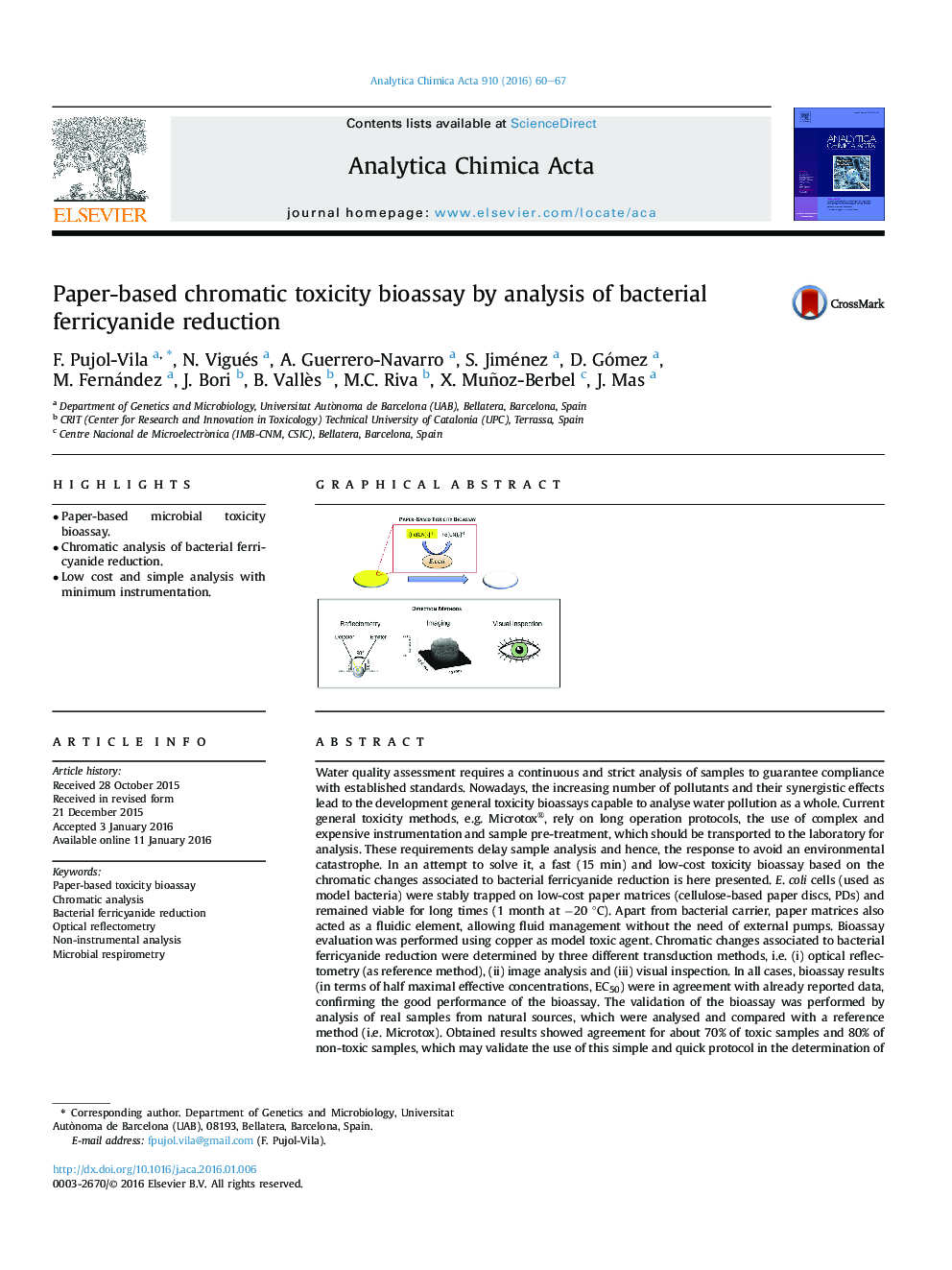| کد مقاله | کد نشریه | سال انتشار | مقاله انگلیسی | نسخه تمام متن |
|---|---|---|---|---|
| 1163076 | 1490922 | 2016 | 8 صفحه PDF | دانلود رایگان |
• Paper-based microbial toxicity bioassay.
• Chromatic analysis of bacterial ferricyanide reduction.
• Low cost and simple analysis with minimum instrumentation.
Water quality assessment requires a continuous and strict analysis of samples to guarantee compliance with established standards. Nowadays, the increasing number of pollutants and their synergistic effects lead to the development general toxicity bioassays capable to analyse water pollution as a whole. Current general toxicity methods, e.g. Microtox®, rely on long operation protocols, the use of complex and expensive instrumentation and sample pre-treatment, which should be transported to the laboratory for analysis. These requirements delay sample analysis and hence, the response to avoid an environmental catastrophe. In an attempt to solve it, a fast (15 min) and low-cost toxicity bioassay based on the chromatic changes associated to bacterial ferricyanide reduction is here presented. E. coli cells (used as model bacteria) were stably trapped on low-cost paper matrices (cellulose-based paper discs, PDs) and remained viable for long times (1 month at −20 °C). Apart from bacterial carrier, paper matrices also acted as a fluidic element, allowing fluid management without the need of external pumps. Bioassay evaluation was performed using copper as model toxic agent. Chromatic changes associated to bacterial ferricyanide reduction were determined by three different transduction methods, i.e. (i) optical reflectometry (as reference method), (ii) image analysis and (iii) visual inspection. In all cases, bioassay results (in terms of half maximal effective concentrations, EC50) were in agreement with already reported data, confirming the good performance of the bioassay. The validation of the bioassay was performed by analysis of real samples from natural sources, which were analysed and compared with a reference method (i.e. Microtox). Obtained results showed agreement for about 70% of toxic samples and 80% of non-toxic samples, which may validate the use of this simple and quick protocol in the determination of general toxicity. The minimum instrumentation requirements and the simplicity of the bioassay open the possibility of in-situ water toxicity assessment with a fast and low-cost protocol.
Figure optionsDownload as PowerPoint slide
Journal: Analytica Chimica Acta - Volume 910, 3 March 2016, Pages 60–67
